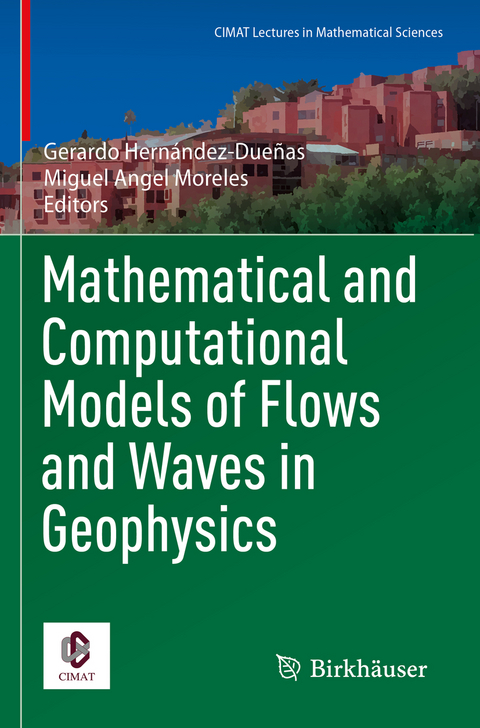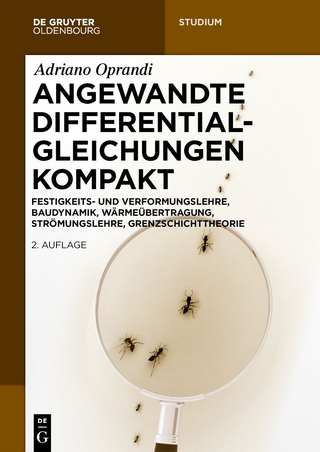
Mathematical and Computational Models of Flows and Waves in Geophysics
Springer International Publishing (Verlag)
9783031120091 (ISBN)
The physical laws dictating the evolution of such phenomena lead to the unifying theme of this manuscript, that is, the mathematical and computational modeling of flows and waves. Consequently, the underlying models are given in terms of Partial Differential Equations (PDEs) whose solutions are approximated using numerical methods, thus providing simulations of the aforementioned phenomena, as well as the appropriate geophysical validation and interpretation.
lt;b>Miguel Angel Moreles obtained his PhD in 1995 at the University of Minnesota on Partial Differential Equations and Control Theory. Currently, he is a full professor at the Center for Research in Mathematics (CIMAT). He has been visiting professor at the Applied Geophysics Department, CICESE (2003-2004), and the Department of Chemical and Petroleum Engineering-Centre Simulation and Visualization University of Calgary (2013- 2014).
Prof. Moreles research interests are multidisciplinary, Mathematical Modeling, Numerical Analysis, Partial Differential Equations. Some recent publications are on Mathematical modeling and simulation of geophysical phenomena.
He has mentored 6 Ph.D. and more that 20 master students. The degrees conferred are in Applied Mathematics, Computer Science and Engineering.
Prof. Moreles has edited several Lecture Notes in the series Notes on Modeling and Numerical Methods, edited by CIMAT - CIMNE. He has also Edited Numerical Methods Conference Proceedings.
Prof. Moreles was the Mexican leader of the project Partial Differential Equations related to waves and inverse problems: applications to Physics, Biology and Clean Energy. CONACYT - ECOS NORD. 2016 - 2019. During the project, he was a regular visitor at INSA-Rouen. In R&D, Prof. Moreles has participated in Computational Modeling Projects for PEMEX, the Mexican Oil Company: Air injection as an enhanced oil recovery process, and Alternating water and gas injection as an enhanced oil recovery process (2010 - 2013).Gerardo Hernández-Dueñas obtained his Ph. D. in 2011 from the Department of Mathematics at The University of Michigan - Ann Arbor, where he worked in the areas of semiclassical analysis and hyperbolic conservation laws. He was a Van Vleck visiting assistant professor at the Department of Mathematics, University of Wisconsin - Madison. He is an associate professor at the Institute of Mathematics, UNAM-Juriquilla, currently under a sabbatical visit at NorthWest Research Associates in Seattle.
As the PI of 5 grants, his research interests have focused in the areas of Applied Mathematics and Atmospheric Sciences, Numerical Analysis of Hyperbolic Conservation Laws, Geophysical Fluid Dynamics, Semiclassical Analysis and Turbulence.
Prof. Hernandez-Dueñas has mentored 5 undergraduate students and is currently mentoring one Ph.D. student, one master student and two postdocs.
- Geostrophic Turbulence and the Formation of Large Scale Structure. - Ocean Surface Waves and Ocean-Atmosphere Interactions. - A 3D Two-Phase Conservative Level-Set Method Using an Unstructured Finite-Volume Formulation. - The Physics of Granular Natural Flows in Volcanic Environments. - Cooperative Gravity and Full Wave form Inversion: Elastic Case. - Modelling the 3D Electromagnetic Wave Equation: Negative Apparent Conductivities and Phase Changes.
| Erscheinungsdatum | 04.11.2023 |
|---|---|
| Reihe/Serie | CIMAT Lectures in Mathematical Sciences |
| Zusatzinfo | IX, 195 p. 1 illus. |
| Verlagsort | Cham |
| Sprache | englisch |
| Maße | 155 x 235 mm |
| Gewicht | 323 g |
| Themenwelt | Mathematik / Informatik ► Mathematik ► Analysis |
| Mathematik / Informatik ► Mathematik ► Wahrscheinlichkeit / Kombinatorik | |
| Naturwissenschaften ► Geowissenschaften ► Geophysik | |
| Schlagworte | Geostrophic Turbulence • Granular Flow • ocean surface waves • Two phase flow • Wave Equations |
| ISBN-13 | 9783031120091 / 9783031120091 |
| Zustand | Neuware |
| Informationen gemäß Produktsicherheitsverordnung (GPSR) | |
| Haben Sie eine Frage zum Produkt? |
aus dem Bereich


